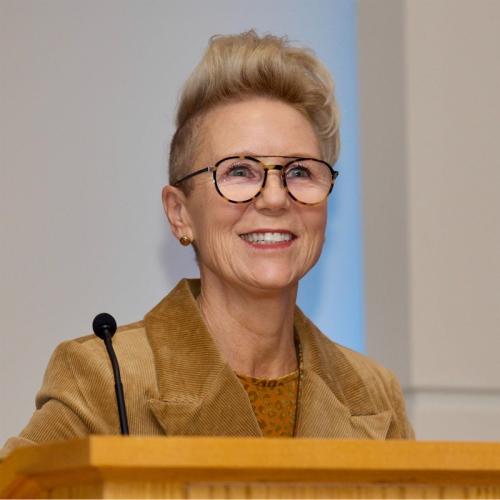
Howard Walthall
Howard Walthall is the CEO of Lumiheal Therapeutics. He is an experienced Regenerative Medicine and MedTech entrepreneur with proven success developing and positioning new products and building effective Sales, Marketing, R&D and Operational teams. Howard was previously the CEO of the NuTech companies, which built a regenerative medicine business focusing on surgical and wound care applications, and Executive Vice President for Organogenesis, Inc, which acquired NuTech in 2017.

Gregory Schultz
Gregory Schultz, PhD, is Professor of Obstetrics and Gynecology and Director of the Institute for Wound Research at the University of Florida. A major area of his research focuses on defining the role of bacterial biofilms in stimulating chronic inflammation and proteases that impair healing in chronic wounds. Dr. Schultz has co-authored 400 scientific publications that have been cited over 17,000 times, has received $38 million grant support as Principal Investigator or Co-investigator, is an inventor on 31 patents, and is a co-founder of two biotech companies in the areas of antimicrobial coatings and antiscarring drugs. He served as President of the Wound Healing Society (1999-2001) and as a member of the National Pressure Ulcer Advisory Panel (2007-2010).

Mitchell Sanders
Serial Entrepreneur, C-Level Executive, and Scientist developing advanced wound care products for the past 30 years with 15 peer reviewed publications and 45 world-wide patents. Dr. Sanders was founder and CEO of ECI Biotech (1998-2016) and his company developed the first infection diagnostic for chronic wounds (Bacterial Status), sold by WoundChek Labs. Dr. Sanders is currently the Chief Scientific Officer of Alira Health, and Executive Vice President of the Product Development Lab. Over the past 20 years Dr. Sanders has secured over $50M in strategic partnerships for new product development. Dr. Sanders earned his undergraduate degree in Biology from Boston University, followed by a MS and PhD in Biology and Biomedical Sciences at Worcester Polytechnic Institute (WPI). His postdoctoral training was at MIT/Whitehead Institute in Biochemistry and Host Pathogen Interactions.

Michael Schurr
Prof. Michael Schurr, MD is a burn and trauma surgeon and general surgeon at Mission Hospitals, Asheville, NC. Dr. Schurr is board certified in general surgery and surgical critical care. He has joined Mission Hospitals as Director of Inpatient Surgical Wound Care in Dec 2014. Prior to that he practiced for more than 15 years at the School of Medicine in University of Wisconsin-Madison and University of Colorado-Denver. He brings 27 years of experience in advanced care of chronic ulcers, burns and trauma wounds. He has successfully led clinical trials of several advanced wound dressings and hernia surgical meshes

Vickie Driver
Vickie R. Driver, DPM, MA, FACFAS, FAAWC, is board certified with the American Board of Podiatric Surgeons and is a Fellow at the American College of Foot and Ankle Surgeons. She is the System Medical Director of the Inova Wound Healing Centers. Dr. Driver has found treating patients and helping them get better to be one of the greatest honors of her life. She takes caring for patients seriously and practices based on the latest evidence and research available.
She also serves as the Co-Director of the Limb Preservation Center and Director of Wound Care and Hyperbaric Research for Inova Heart and Vascular Institute. She has been involved with clinical research across the globe for more than 20 years, seeking to find the very best diagnostics and treatments for patients at high risk of limb loss. Dr. Driver has coauthored more than 150 publications and abstracts.
Dr. Driver has recently been selected as a Fellow of the Royal College of Physicians and Surgeons-Glasgow, PM and is an Inaugural Fellow of the Association for the Advancement of Wound Care (FAAWC). Dr. Driver recently accepted the position as Chair of the Wound Care Collaborative Community, an important collaboration with the U.S Food and Drug Administration (FDA) and the Centers for Medicare and Medicaid Services and has received the Robert A. Warriner III, MD, Memorial Award. Her career has a special emphasis on wound healing and limb preservation, and she is proud to be an outspoken ambassador for improving care to patients that face the burden of limb loss.
Dr. Driver is a former Professor of Surgery in the Department of Orthopedics at Brown University in Providence, RI, and Associate Professor of Surgery at Boston University. She currently serves as Honorary Visiting Professor at Cardiff University (UK) in the Department of Medicine and Professor at Barry University (USA). She proudly serves as a member of the Wound Healing Society’s board of directors and as a member of the board of directors for the Critical Limb Ischemia Global Society, where she also chairs the wound healing committee. She has recently completed her tenure as President of the Advancement of Wound Care Association and has served for nine years on the board of directors.

Carlo Perez
Swift Medical has become the undisputed leader, defining the category with their empathic, AI-powered technology adopted by over 4,000 healthcare facilities across the continuum of care. A serial entrepreneur with 20 years of engineering and company building experience, Carlo has worked at the forefront of artificial intelligence, machine visioning and robotics. He worked in research and development at Advanced Micro Devices (AMD) Inc., taught computer and electrical engineering as a college professor and is a three time, venture-backed tech founder. With Swift Medical, he’s proud to have built one of the few, 100% diverse boards in the health tech industry. Carlo is a recognized thought leader and speaker in wound care innovation, digital health transformation, value-based care, big data and artificial intelligence, empathetic product design and the innovation economy.

Ronald Silverman
Dr. Ron Silverman is the Senior Vice President, Global Medical and Clinical Affairs, Health Care Compliance and Chief Medical Officer for 3M Health Care Business Group. He is also a practicing plastic and reconstructive surgeon at the University of Maryland Medical Center. Prior to his CMO role, Dr. Silverman was the Chief of Plastic Surgery at the University of Maryland and holds academic appointments at both the University of Maryland and Johns Hopkins Schools of Medicine.

John Harper
Dr. Harper joined MIMEDX as Chief Technology Officer and Senior Vice President of Research and Product Development in June 2021. Most recently, he served as a Senior Medical Scientist in the Medical Solutions Division of 3M Health Care and Chief Technology Officer for 3M affiliate KCI, where he was responsible for all early-stage research, innovation and technology development and the study of mechanism of action of the company’s negative pressure wound care technology. During his tenure at KCI, Dr. Harper also led the company’s Clinical Development and Regulatory Affairs organization. Prior to KCI, he served as Vice President of Clinical Development and Clinical Sciences at the biotechnology company LifeCell Corporation, the previous Regenerative Medicine division of Acelity and the leader in acellular scaffold technology and makers of AlloDerm, Strattice, and GraftJacket Regenerative and Reconstructive Tissue Matrices.
Dr. Harper has over 40 peer-reviewed publications and book chapters and his principal areas of research interest are extracellular matrix biochemistry, tissue regeneration, and wound healing. He currently serves as a member of the Board of Directors at Kent Imaging and Nanomedic Technologies.
He received his Ph.D. in Biomedical Sciences from The University of Texas, M.D. Anderson Cancer Center in Houston and completed post-doctoral fellowships in cancer biochemistry and cell biology

Emma Wright
Emma is an industry professional with 25 years of experience in medical devices in both start-up and international companies, based in UK, US and most recently in Sweden. Her career has been focused on the development and commercialisation of devices in wound care, reconstructive surgery and orthopedics with a specific interest in products that actively promote tissue repair. In the last 10 years Emma has led clinical, medical and health economic teams with responsibility for clinical evidence generation, professional education, medical affairs and health economics.

Naomi Lefkovitz
Naomi Lefkovitz is the Senior Privacy Policy Advisor in the Information Technology Lab at the National Institute of Standards and Technology, U.S. Department of Commerce. She leads the privacy engineering program, which focuses on developing privacy risk management processes and integrating solutions for protecting individuals’ privacy into information technologies, including digital identity services, IoT, smart cities, big data, mobile, and artificial intelligence. In addition, she leads the NIST Privacy Framework team.
The International Association of Privacy Professionals named Ms. Lefkovitz their 2020 Vanguard Award winner. She also is a 2014, 2018, and 2020 Federal 100 Awards winner. FierceGovernmentIT named her on their 2013 “Fierce15” list of the most forward-thinking people working within government information technology.
Before joining NIST, she was the Director for Privacy and Civil Liberties in the Cybersecurity Directorate of the National Security Council in the Executive Office of the President. Her portfolio included the National Strategy for Trusted Identities in Cyberspace as well as addressing the privacy and civil liberties impact of the Obama Administration’s cybersecurity initiatives and programs.
Prior to her tenure in the Obama Administration, Ms. Lefkovitz was a senior attorney with the Division of Privacy and Identity Protection at the Federal Trade Commission. Her responsibilities focused primarily on policy matters, including legislation, rulemakings, and business and consumer education in the areas of identity theft, data security and privacy.
At the outset of her career, she was Assistant General Counsel at CDnow, Inc., an early online music retailer.
Ms. Lefkovitz holds a B.A. with honors in French Literature from Bryn Mawr College and a J.D. with honors from Temple University School of Law.